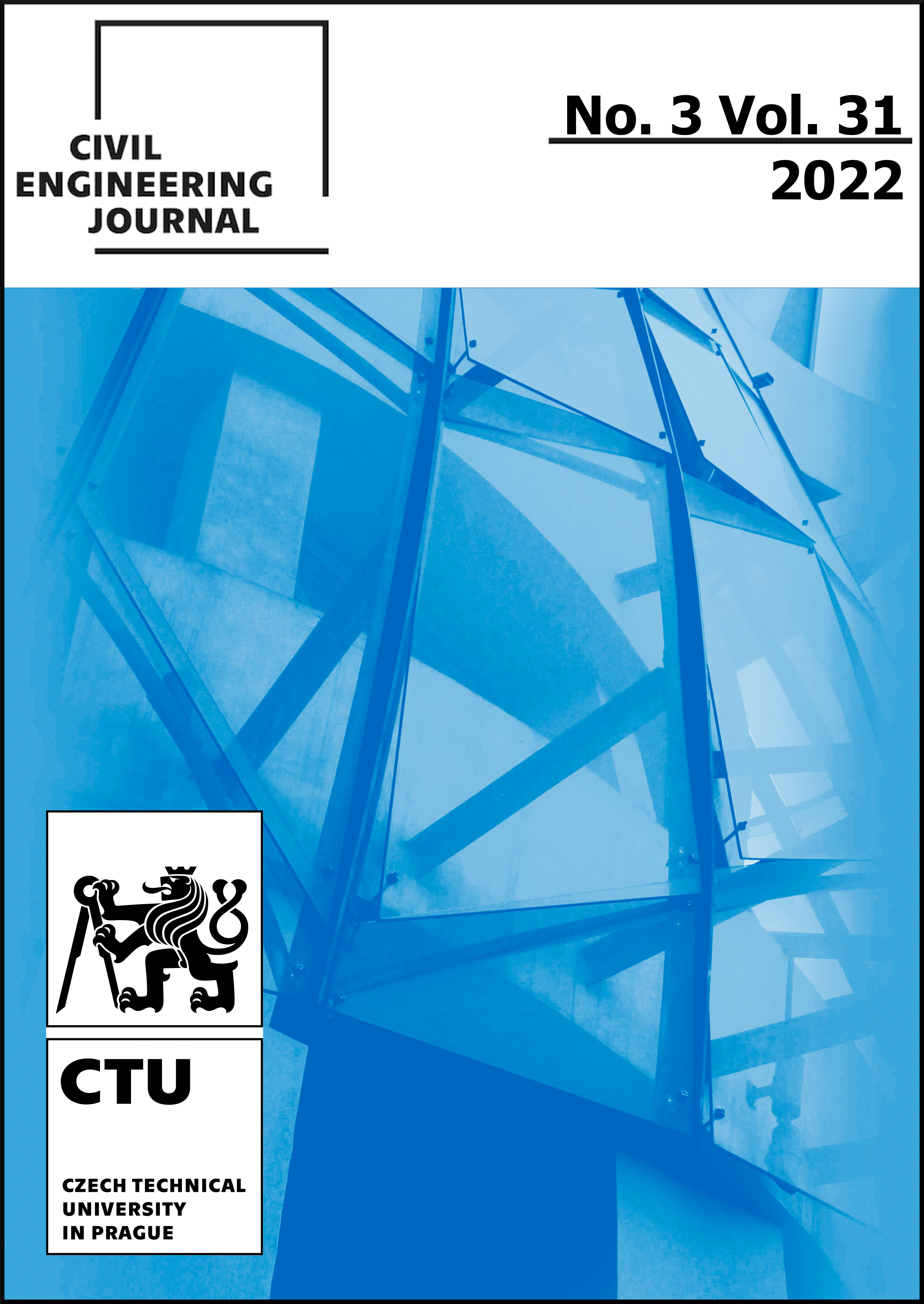THE MULTI-FACTOR CONTROL AND EVALUATION OF HIGHWAY SOFT SOIL SUBGRADE STABILITY
DOI:
https://doi.org/10.14311/CEJ.2022.03.0032Keywords:
Soft soil subgrade, Stability, Ultimate filling height, Inflection point analysis, Thin-layer rotary adding method, GeotextileAbstract
When the surcharge preloading method is used in the treatment of soft soil subgrade, it is necessary to squeeze for more preloading drainage consolidation time under the premise of controlling the subgrade stability during the filling period. Considering the mutation of each monitoring indices and their interrelation when instability occurs in the fill subgrade, the inflection point analysis method through monitoring indices to control the subgrade stability comprehensively was proposed in this paper. The thin-layer rotary adding method was used to determine the ultimate filling depth and the loading plan for the highway soft soil subgrade during the filling period, with the inflection point analysis method in analyzing and evaluating the subgrade stability. The results showed that: (1) The ultimate fill height of the subgrade sections was obtained from the stability analysis results on the basis of the three indices of pore water pressure increment, settlement and lateral displacement, which was close to the prediction results of the thin-layer rotary adding method. (2) The stability control standard of the subgrade construction in the filling method was that the single-stage pore pressure coefficient should be within 1.2. (3) The subgrade stability control standard contained the maximum settlement rate of 20mm/d and the maximum lateral displacement rate of 3mm/d. (4) The geotextile setting in the highway subgrade effectively improved the ultimate bearing capacity of the subgrade, reduced the lateral displacement, improved the anti-slip stability, and increased the ultimate filling height and filling rate.
Downloads
References
XU Renping, WANG Shuliang, YE Yong (2006) Monitoring of Highway Soft Soil Road Bed Stability. Technology of Highway and Transport (4): 9-13.
RAO Bo, WEI Limin (2005) A Stability Control Method for Fill Embankment on Soft Ground. Journal of Highway and Transportation Research and Development 22(2):46-49.
Edward Brand, R.P. Brenner (1981) Soft clay engineering. Elserier scientific publishing company, Amsterdam.
LADD C.C (1991) Stability evaluation during staged construction: 22nd Terzaghi Lecture. Journal of Geotechnical Engineer, ASCE 117(4): 537-615.
HUANG Teng, TAN Xiangshao, WU Yugang (2007) A practical stability analysis method for the soft soil foundation on Pearl River Delta. Chinese Journal of Geotechnical Engineering 29(3): 391-397.
WANG Yanling, CHEN Jianfeng (2002) Monitoring Methods of High Filled Road Bed in Soft Soil Areas. Journal of Engineering Geology 10(S1): 668-671.
WANG Yanhui. Stability Judgment of Soft Soil Subgrade in Mountainous Area based on AGO Method. Highway Traffic Technology (Applied Technology Edition) (7):104-106.
WANG Yongping, ZHANG Gongxin, ZENG Qingjun, et al (2005) Determination of Loading Plan Using Thin-Layer Rotary Adding Method. Port & Waterway Engineering (9):62-64,100.
Ministry of Housing and Urban-Rural Development of the People’s Republic of China. Technical code for ground treatment of buildings (JGJ 79-2012), Beijing: China Building Industry Press, 2012.
XIE Chuang (2015) Stability control method of Highway soft soil foundation treatment construction. Theoretical Research in Urban Construction 5(3):489-490.
Downloads
Published
Issue
Section
License
Copyright (c) 2022 Author

This work is licensed under a Creative Commons Attribution-NonCommercial 4.0 International License.
Authors who publish with this journal agree to the following terms:
- Authors retain copyright and grant the journal right of first publication with the work simultaneously licensed under a Creative Commons Attribution License that allows others to share the work with an acknowledgement of the work's authorship and initial publication in this journal.
- Authors are able to enter into separate, additional contractual arrangements for the non-exclusive distribution of the journal's published version of the work (e.g., post it to an institutional repository or publish it in a book), with an acknowledgement of its initial publication in this journal.
- Authors are permitted and encouraged to post their work online (e.g., in institutional repositories or on their website) prior to and during the submission process, as it can lead to productive exchanges, as well as earlier and greater citation of published work (See The Effect of Open Access).
How to Cite
Accepted 2022-10-14
Published 2022-10-30











